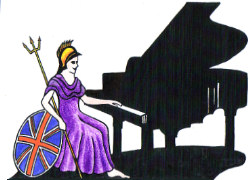Teachers, Accompanists and Piano Entertainers in the UK

UK Piano Page

Helston, Cornwall TR12
England
Professional piano teacher and composer of 30 years’ experience offering piano lessons, music theory and composition tuition tailored to your unique...
The Estate Yard
Eridge
Royal Tunbridge Wells, Kent TN3 9JR
England
The Piano Shop Kent is near Tunbridge Wells on the
The Hurst Crouch
Borough Green
Sevenoaks, Kent TN15 8TA
England
We offer some of the lowest prices in Europe for
10 Portman Square
Baker Street
Marylebone, London W1H 6AZ
England
11, St. Mary's Hill
Stamford, Lincolnshire PE9 2DP
England
Music shop established in 1963 we stock a large
251 Kings Road
Chelsea
Chelsea, London
England
Chelsea London was founded on the famous King's
Music Festival for performers and guests Our 10th
18-06-2022 12:30PM
The Morecambe Bay Piano Group was set up to extend
11-12-2021 01:00PM
The Morecambe Bay Piano Group was set up to extend
08-01-2022 01:00PM
The Morecambe Bay Piano Group was set up to extend
12-02-2022 01:00PM